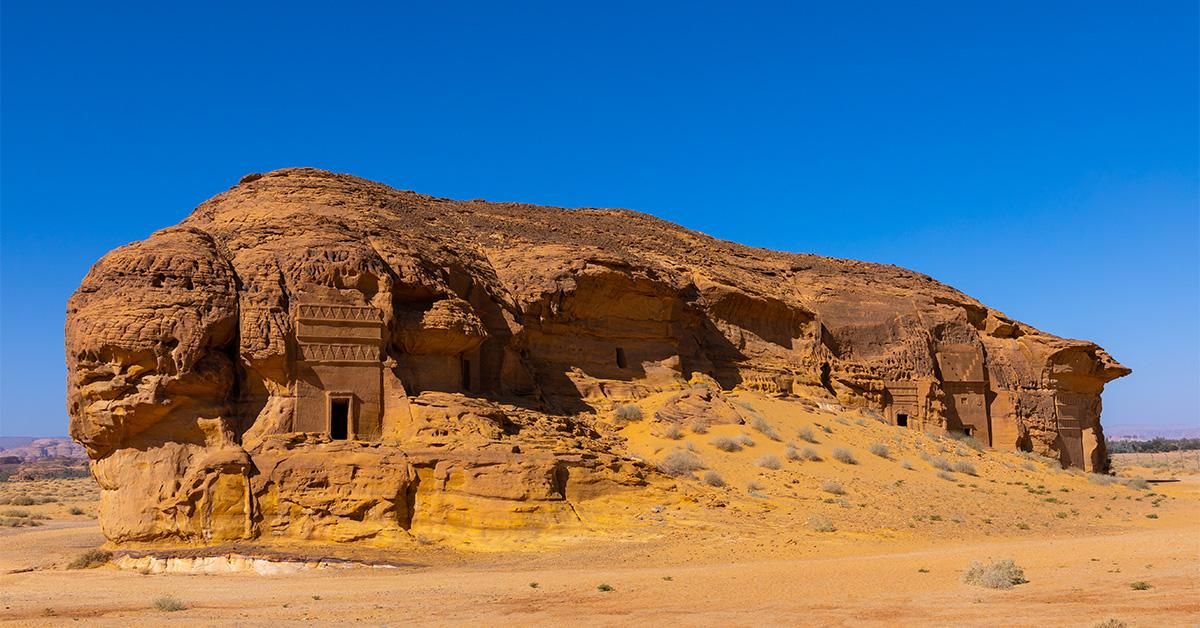Disir
Platinum Member
- Sep 30, 2011
- 28,003
- 9,607
- 910
SMITHSONIANMAG.COM | Nov. 23, 2020, 3:42 p.m.
In the scrub-speckled desert north of AlUla in Saudi Arabia, rocky outcrops and giant boulders the size of buildings, beautifully carved and with classical-style pediments and columns, poke out of the sands like divinely scattered seeds. As the sun sets, the dusty colors flare, revealing pockmarks and stains caused by rain, which has shaped these stones for millennia.
Once a thriving international trade hub, the archeological site of Hegra (also known as Mada'in Saleh) has been left practically undisturbed for almost 2,000 years. But now for the first time, Saudi Arabia has opened the site to tourists. Astute visitors will notice that the rock-cut constructions at Hegra look similar to its more famous sister site of Petra, a few hundred miles to the north in Jordan. Hegra was the second city of the Nabataean kingdom, but Hegra does much more than simply play second fiddle to Petra: it could hold the key to unlocking the secrets of an almost-forgotten ancient civilization.
Determined to wean its economy off the petro pipeline, Saudi Arabia is banking on tourism as a new source of income. Oil currently accounts for 90 percent of the country’s export earnings and makes up about 40 percent of its GDP. In 2016, Crown Prince Mohammed bin Salman announced Saudi Vision 2030, a roadmap for the country over the next two decades that aims to transform it into a global hub for trade and tourism that connects Africa, Asia and Europe.

 www.smithsonianmag.com
www.smithsonianmag.com
This is cool.
In the scrub-speckled desert north of AlUla in Saudi Arabia, rocky outcrops and giant boulders the size of buildings, beautifully carved and with classical-style pediments and columns, poke out of the sands like divinely scattered seeds. As the sun sets, the dusty colors flare, revealing pockmarks and stains caused by rain, which has shaped these stones for millennia.
Once a thriving international trade hub, the archeological site of Hegra (also known as Mada'in Saleh) has been left practically undisturbed for almost 2,000 years. But now for the first time, Saudi Arabia has opened the site to tourists. Astute visitors will notice that the rock-cut constructions at Hegra look similar to its more famous sister site of Petra, a few hundred miles to the north in Jordan. Hegra was the second city of the Nabataean kingdom, but Hegra does much more than simply play second fiddle to Petra: it could hold the key to unlocking the secrets of an almost-forgotten ancient civilization.
Determined to wean its economy off the petro pipeline, Saudi Arabia is banking on tourism as a new source of income. Oil currently accounts for 90 percent of the country’s export earnings and makes up about 40 percent of its GDP. In 2016, Crown Prince Mohammed bin Salman announced Saudi Vision 2030, a roadmap for the country over the next two decades that aims to transform it into a global hub for trade and tourism that connects Africa, Asia and Europe.

Hegra, an Ancient City in Saudi Arabia Untouched for Millennia, Makes Its Public Debut
The archaeological site, now open to tourists, offers clues about the mysterious empire that built it and its more famous sister city of Petra in Jordan
This is cool.

